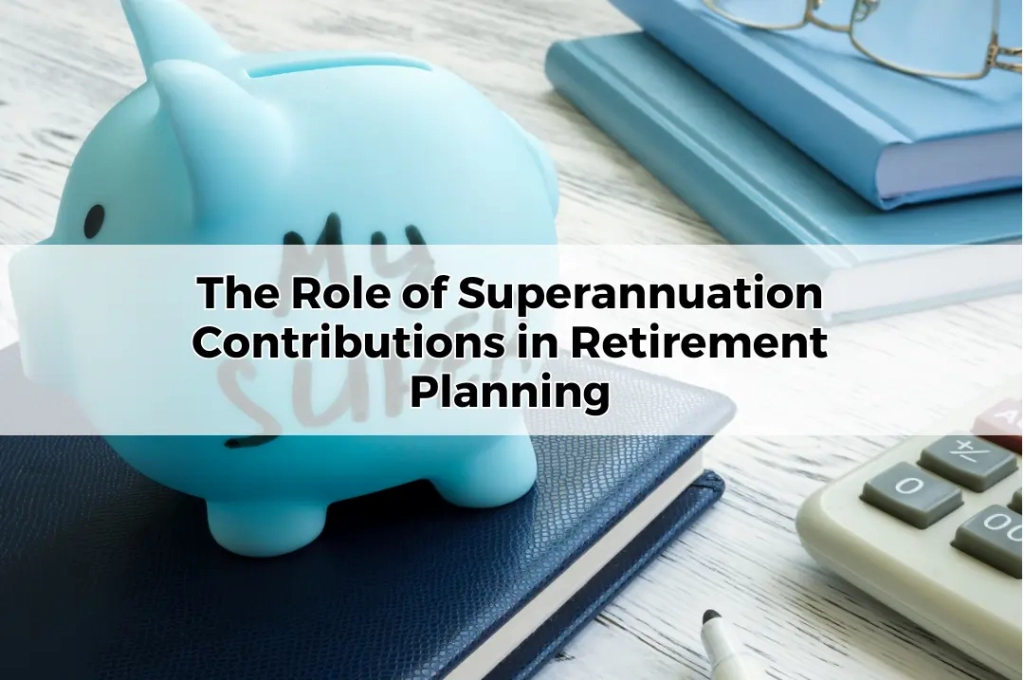The Role of Superannuation Contributions in Retirement Planning
Table of Contents
ToggleRetirement planning is an essential aspect of financial health, ensuring that individuals can enjoy a secure and comfortable retirement. It involves setting long-term goals, understanding future needs, and creating strategies to achieve those objectives. Central to this planning is the role of superannuation contributions, which provide a structured and tax-effective way to save for the future.
Overview of Superannuation Contributions
Superannuation, or ‘super,’ is a system designed to help Australians accumulate funds for retirement. Contributions to superannuation accounts come from various sources, including employers and voluntary personal contributions. These contributions are crucial in building a substantial retirement nest egg.
Understanding Superannuation
Definition and Purpose
Superannuation is a government-supported initiative aimed at ensuring individuals have adequate funds during their retirement years. The system mandates regular contributions to a superannuation fund, which invests these contributions to grow the retirement savings over time.
Key Components of Superannuation
Superannuation consists of contributions, investment earnings, and the super fund itself. Contributions are the amounts paid into the fund, which are then invested in various assets. The super fund manages these investments, aiming to grow the savings through compounding returns.
Types of Superannuation Contributions
Employer Contributions (Superannuation Guarantee)
Employer contributions are mandatory payments made by employers on behalf of their employees. This is known as the Superannuation Guarantee (SG). The SG rate is a percentage of an employee’s ordinary time earnings, which employers must contribute to their super fund.
Voluntary Contributions
In addition to employer contributions, individuals can make voluntary contributions to their superannuation. These can be either concessional (pre-tax) or non-concessional (after-tax) contributions, providing flexibility in how individuals can boost their retirement savings.
Employer Contributions
Mandatory Contributions and Regulations
The Superannuation Guarantee requires employers to contribute a minimum percentage of an employee’s salary into their super fund. This rate is legislated and subject to periodic increases, ensuring that contributions keep pace with inflation and changing economic conditions.
Benefits of Employer Contributions
Employer contributions form the backbone of an individual’s superannuation savings. They provide a consistent and reliable source of funds, which, when combined with investment growth, significantly contribute to the overall retirement savings.
Voluntary Contributions
Concessional Contributions
Concessional contributions are voluntary payments made from pre-tax income, including salary sacrifice and personal deductible contributions. These contributions are taxed at a lower rate of 15% within the super fund, making them a tax-effective way to save for retirement.
Non-Concessional Contributions
Non-concessional contributions are made from after-tax income and are not taxed within the super fund. These contributions are subject to higher annual caps but provide an opportunity to boost retirement savings without additional tax burdens.
Tax Advantages of Superannuation
Tax Treatment of Contributions
Superannuation contributions benefit from favorable tax treatment. Concessional contributions are taxed at a flat rate of 15%, which is typically lower than the individual’s marginal tax rate. This tax advantage makes superannuation an attractive savings vehicle.
Tax Benefits on Earnings
Investment earnings within a super fund are also taxed at a concessional rate, typically 15%, and can be lower for long-term capital gains. This tax efficiency helps in growing the retirement savings more effectively than if the investments were held outside the super system.
Contribution Caps and Limits
Annual Contribution Caps
There are annual caps on both concessional and non-concessional contributions to prevent excessive amounts being funneled into the tax-advantaged super system. For concessional contributions, the cap is $27,500 per year, while for non-concessional contributions, it is $110,000 per year.
Consequences of Exceeding Limits
Exceeding these contribution caps can result in additional taxes and penalties. It is crucial to monitor contributions to stay within the prescribed limits and avoid financial penalties that could erode the retirement savings.
Strategies for Maximising Superannuation
Salary Sacrifice
Salary sacrifice is a strategy where an employee agrees to forgo a portion of their pre-tax salary in exchange for equivalent contributions to their super fund. This arrangement not only boosts super savings but also reduces taxable income.
Catch-Up Contributions
Catch-up contributions allow individuals with unused concessional caps from previous years to make additional contributions. This strategy is particularly beneficial for those with irregular income or those who could not maximise their contributions in earlier years.
The Impact of Compound Interest
Explanation of Compound Interest
Compound interest is the process where investment earnings generate additional earnings over time. In the context of superannuation, the returns on investments are reinvested, leading to exponential growth of the retirement savings.
Long-Term Growth Potential
The power of compound interest means that the earlier contributions are made, the more time they have to grow. Regular and consistent contributions, even if small, can accumulate significantly over the long term, providing substantial retirement funds.
Superannuation and Investment Options
Default Investment Options
Most super funds offer default investment options, which are diversified portfolios designed to suit the average member. These options balance risk and return, catering to a broad range of investors.
Customising Your Investment Strategy
For those with specific financial goals or risk preferences, customising the investment strategy within the super fund can optimise returns. Options may include more aggressive growth investments or conservative income-focused investments, depending on individual risk tolerance and retirement timeline.
Accessing Superannuation
Conditions of Release
Superannuation funds are generally preserved until reaching the preservation age, currently between 55 and 60 depending on the birth year. Accessing super funds is subject to meeting specific conditions of release, such as retirement, reaching age 65, or experiencing severe financial hardship.
Impact of Early Access
While early access to superannuation is possible under certain circumstances, it can significantly impact retirement savings. Withdrawing funds early reduces the amount available at retirement and the benefits of compound growth, potentially jeopardising long-term financial security.
Planning for a Comfortable Retirement
Setting Retirement Goals
Setting clear and realistic retirement goals is essential for effective planning. This includes estimating the amount of money needed to maintain a desired lifestyle and determining the savings required to achieve these goals.
Regularly Reviewing and Adjusting Contributions
Regular reviews and adjustments to superannuation contributions ensure that the retirement plan remains on track. Life changes, such as income variations or shifts in financial goals, necessitate revisiting the contribution strategy to align with the current situation and future objectives.
Superannuation contributions are a vital component of retirement planning, offering a tax-effective means to accumulate wealth for the future. Understanding the types of contributions, leveraging tax advantages, and employing strategies like salary sacrifice and catch-up contributions can significantly enhance retirement savings. Regular reviews and adjustments, coupled with a clear understanding of investment options and the impact of compound interest, ensure that individuals are well-prepared for a financially secure and comfortable retirement.









